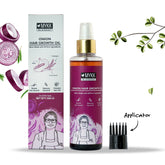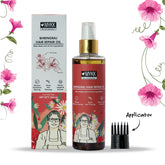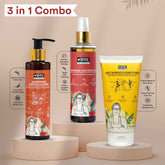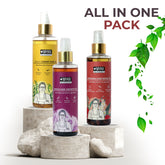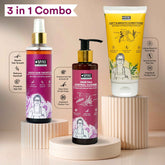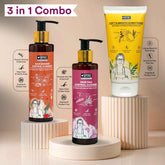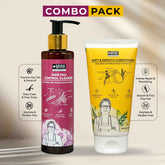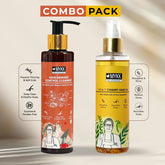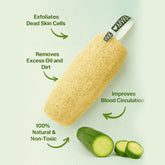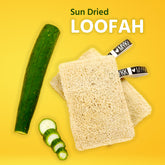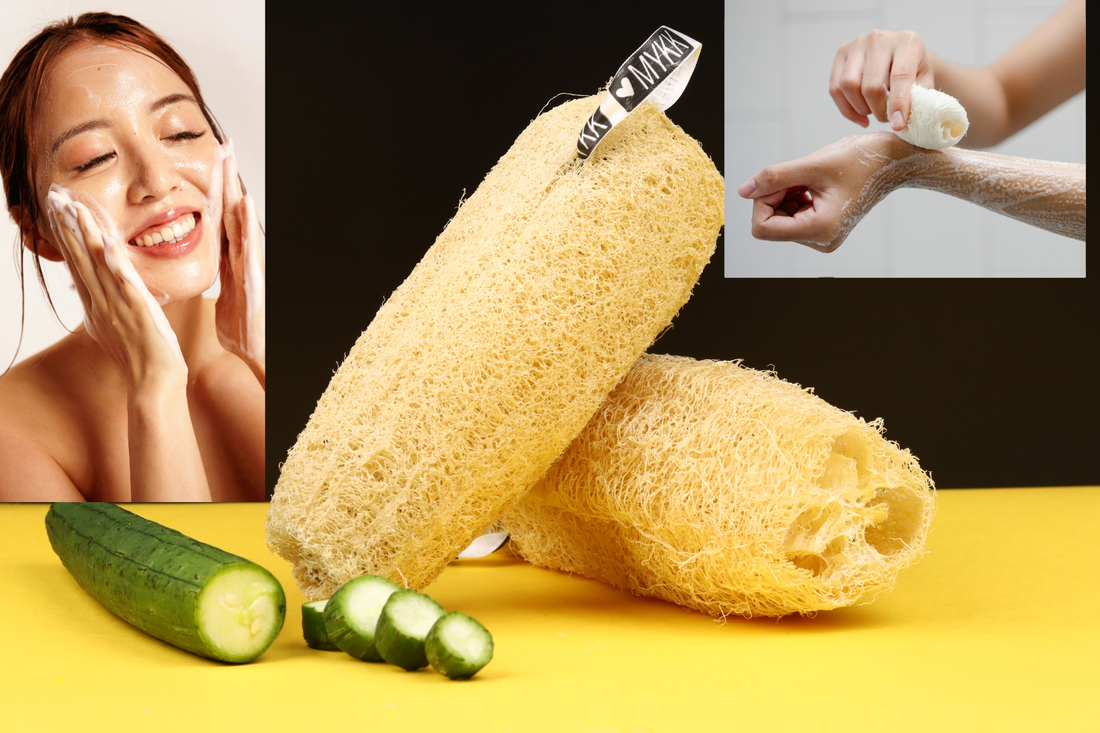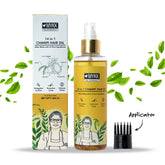Why Natural Loofah Is the Secret to Glowing Indian Skin – The Ayurvedic Way
Long before luxury skincare brands arrived, Indian households trusted simple, natural tools for beauty — one of them being the humble natural loofah, or ghisni as our grandmothers fondly called it. Made from the dried fibres of the Luffa gourd, this eco-friendly bath essential is more than just a scrubber. According to Ayurveda, exfoliation is an essential part of daily cleansing to remove ama (toxins), stimulate blood circulation, and awaken your skin’s natural glow.
What Is a Natural Loofah?
A natural loofah is a 100% plant-based sponge made from the dried fruit of the Luffa cylindrica or Luffa aegyptiaca plant. Unlike plastic or synthetic bath sponges, it is biodegradable, eco-friendly, and naturally textured, making it perfect for gentle exfoliation. In Ayurveda, such natural fibres are considered satvik — meaning they help purify not only your body but also your energy.
The Ayurvedic Science Behind Loofah and Glowing Skin
Using a loofah during bath helps to:
Remove dead skin cells naturally, without harsh chemicals.
Improve blood circulation, giving your skin a healthy, pinkish glow.
Open pores and detoxify by encouraging sweating and cleansing.
Prevent ingrown hair and bumps by clearing oil and dirt build-up.
Awaken the senses, leaving you refreshed and energised.
When combined with Ayurvedic herbs like turmeric, sandalwood, or ubtan, it becomes a reviving ritual for both body and mind.

How to Use a Loofah – The Ayurvedic Way
To enjoy the full benefits, follow this simple Ayurvedic bathing routine:
Soak the Loofah – Dip it in warm water for a minute to soften its fibres.
Apply Natural Cleanser – Use an Ayurvedic soap, ubtan, or herbal body wash (avoid chemical foaming gels).
Scrub in Circular Motions – Move gently over your body, focusing on elbows, knees, and feet.
Rinse and Moisturise – Wash off with lukewarm water and follow with cold-pressed oil or ghee for nourishment.
Clean & Dry Your Loofah – Rinse thoroughly, squeeze excess water, and hang it in sunlight to prevent moisture build-up.
Ayurvedic Tip: Use your loofah 2–3 times a week to maintain your body’s natural oils while keeping your skin soft and radiant.
Why Switch to Natural Loofah Instead of Plastic Sponges
Zero Chemicals, Zero Waste: Made from plants, not petroleum.
Biodegradable: Returns to soil after use, leaving no trace.
Supports Rural Communities: Many Indian self-help groups handcraft natural loofahs, supporting women artisans.
Lasts Longer & Feels Better: Naturally textured fibres give a gentle but effective scrub.
By switching to a handmade Indian loofah, you’re not only caring for your skin but also supporting sustainable livelihoods and reducing plastic pollution.
When to Replace Your Loofah
Replace your loofah every 3–4 weeks or when it starts to darken or soften excessively. Keeping it dry between uses ensures hygiene and longevity.
Ancient Wisdom for Modern Skincare
In the rush for instant results, we often forget that true beauty comes from rhythm, balance, and connection with nature. The natural loofah is a timeless reminder of that — a simple tool that helps your skin breathe, glow, and renew the Ayurvedic way. So next time you step into the shower, reach for the loofah — and rediscover what your skin truly needs: purity, touch, and tradition.


